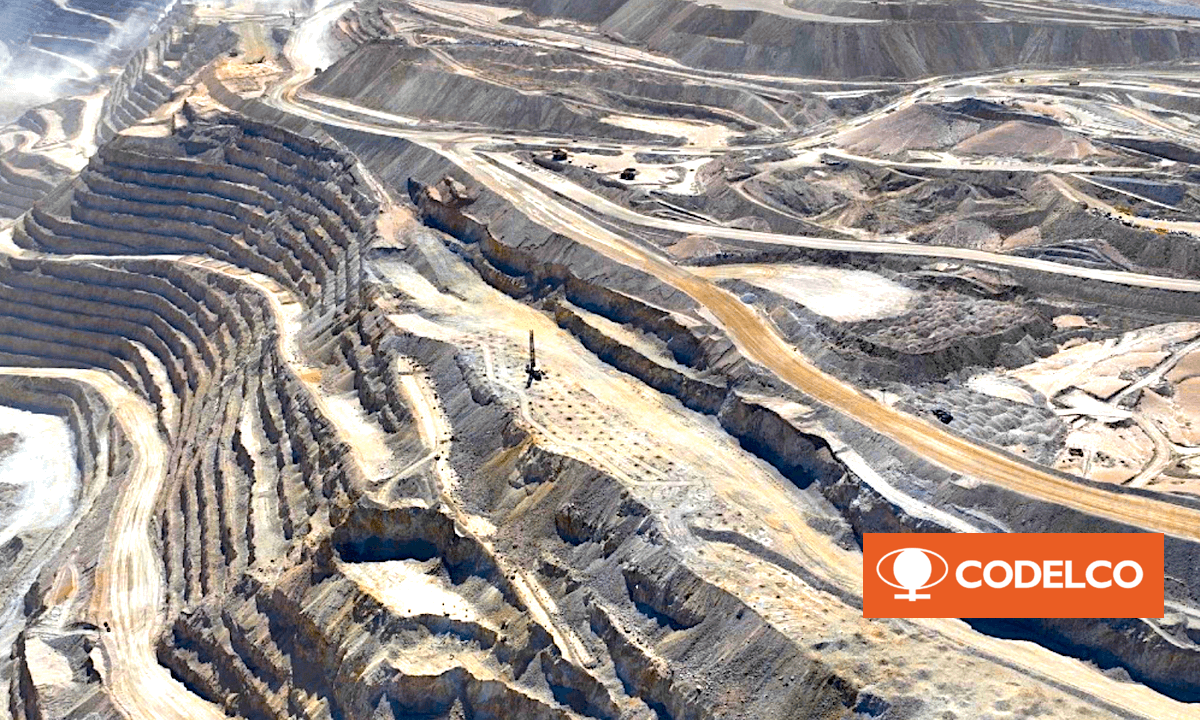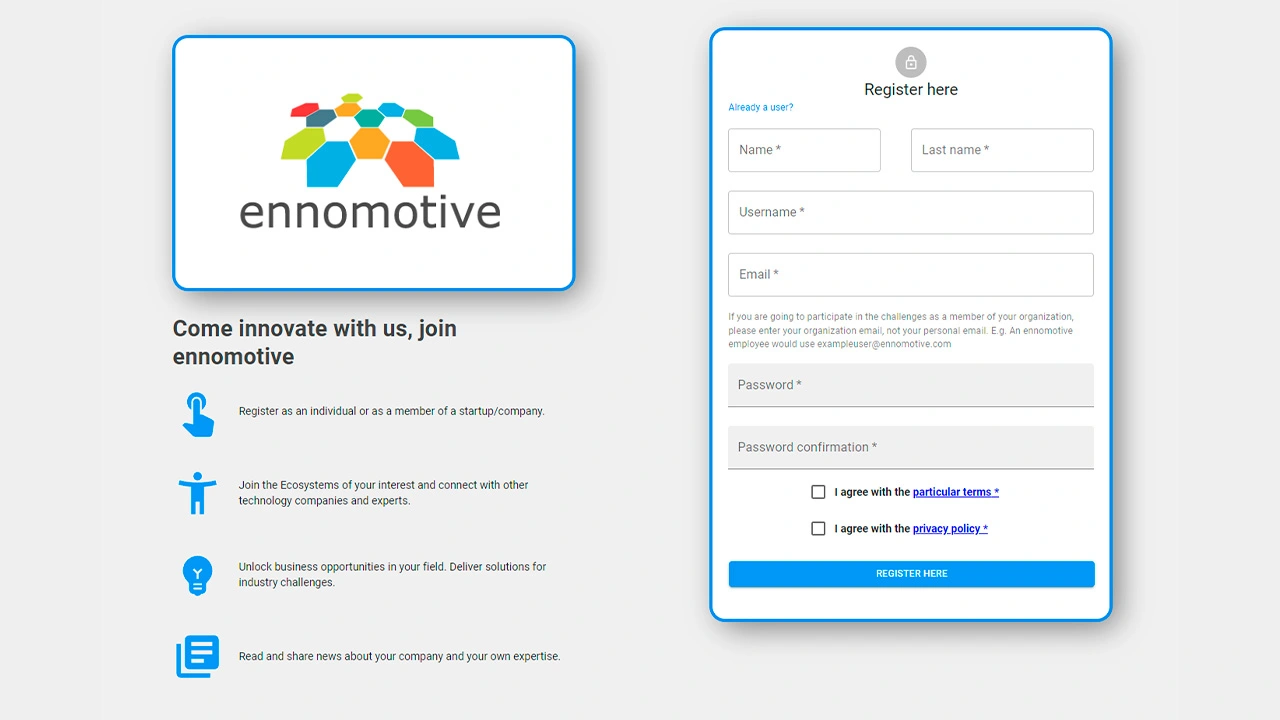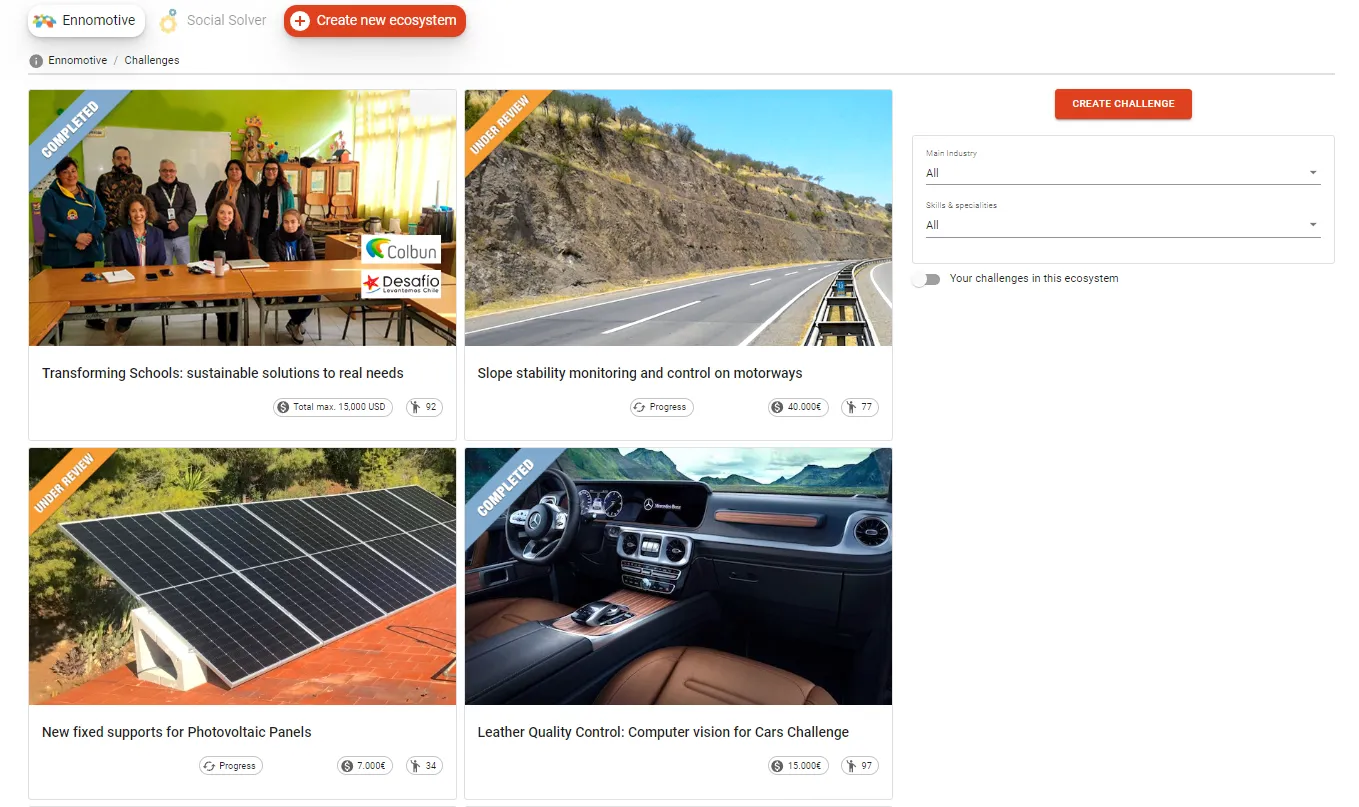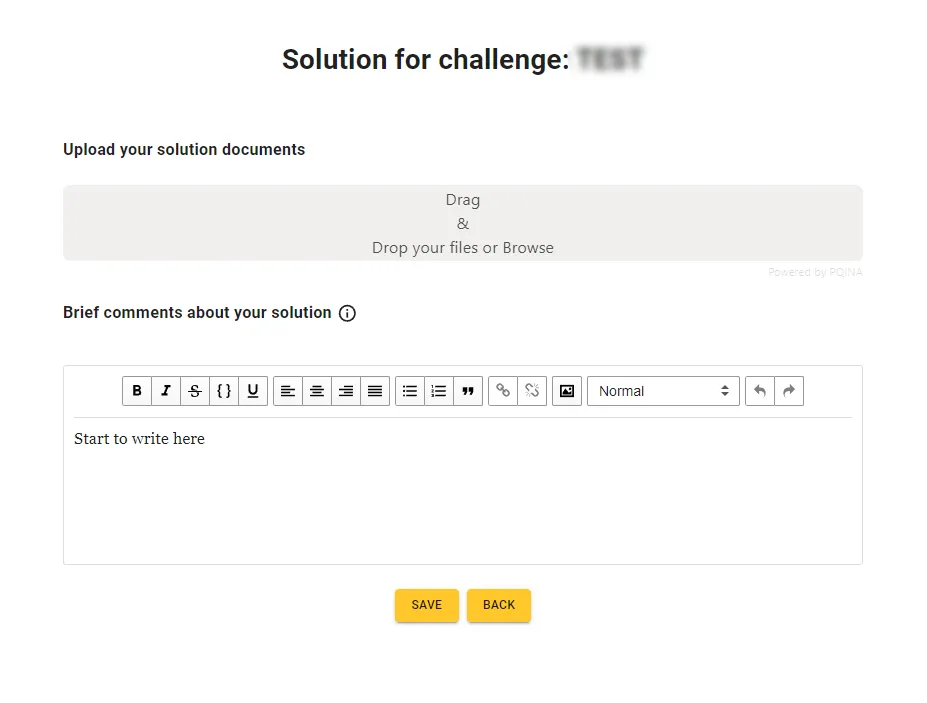Background
Codelco is the largest company in Chile and the world's leading copper producer. Its mission is to maximize economic, environmental and social value sustainably, through copper mining and its by-products. In January-September 2024, they produced 918,000 tons of copper, 22% of world production.
Codelco’s goal is to become the new world leader in innovation in the mining industry through the adoption of an open model for solution development.
Aware of the growing needs of the mining sector, Codelco promotes the best available practices to achieve a technological transformation that allows progress toward safer, more sustainable mining that is respectful of its environment and territories.
The challenge
Codelco operates both open pit and underground mines. This is the case of Chuquicamata, the world's largest open-pit mine, with approximate dimensions of 5 km in length, 3 km in width, and 1 km in depth. The deposit is located 15 kilometers north of Calama, at an elevation of 2,870 meters, in the Antofagasta Region of Chile.
To continue exploiting the deposit, the ore extraction method was changed from open-pit to underground mining using the block caving method. This approach defined four production levels, all located below the lowest level of the current open-pit operation. The Block Caving configuration uses drilling and blasting for the displacement of rock blocks, allowing the breaking or collapse of the rock mass under the open pit mine and ore extraction.
As a result of the interaction between the open-pit and underground mines (blasting, subsidence), dust emissions (suspended particulate matter) increase. This is mainly due to vibrations and displacements in the pit slopes and walls caused by underground mining operations, with portions of the slopes occasionally sliding down toward the bottom of the mine.
THE DUST ORIGINATES FROM:
- Mainly, the WEST slope of the pit (approx. 5,600,000 m2), which is affected by a geological fault, currently without exploitation. On that slope, the roads for exploitation have been lost, and the ore slides down the slope with each subsidence movement from block caving and blasting until reaching the bottom, generating large amounts of dust.
- The EAST slope of the pit (approx. 5,140,000 m2), currently being exploited also with blasting.
These exploitation conditions generate dust constantly. Due to the geometry and extension of the pit and temperature conditions, part of the dust becomes trapped and is difficult to dissipate. Another part of the dust may spread through surrounding areas (even 15 km or more) due to prevailing winds.
Dust is monitored through a network of air quality monitoring stations, where PM10 and PM2.5 and other indexes are measured.
The challenge annex documents include sketches and drawings, photos and videos of the mine, as well as monitoring station data. (NOTE: It is necessary to register for the challenge to download these annexes).
ACTIONS UNDERTAKEN TO DATE
As dust remains one of the main challenges at the mine, some progress has been made through the adoption of some commercial solutions:
For mitigation:
- Salt for the slopes
- Bischofite (salt composed mainly of magnesium chloride) on the roads
- Fog cannons
All these measures are helpful but not sufficient; therefore, more comprehensive studies are required due to the large size of the pit. All variables, including wind, need to be considered, along with adequate coverage of the extensive areas in order to effectively mitigate the impact.
For monitoring:
Currently there are 2 initiatives being tested for dust monitoring:
- Lidar system
- Particulate matter sensors at different strategic points in the pit
There are also geometric control systems for slope displacement.
What CODELCO is looking for
CODELCO seeks EFFICIENT ALTERNATIVES TO MEASURE, CONTROL AND MITIGATE SUSPENDED DUST in the open pit mine that interacts with the underground mine (subsidence) and REDUCE PM10 DUST INDICES AND ITS PROPAGATION. The main challenge comes from the large size of the pit and the limited accessibility.
We are looking for solutions in 2 differentiated but complementary areas:
1. CONTROL AND MITIGATION of the amount of dust (PM10 index) being generated (due to dust origins #1 and #2)
Mitigation measures could be triggered temporarily (according to conditions such as wind, amount of dust...) to control when to mitigate dust, or permanently.
2. DUST MONITORING (PM10 index). Technologies such as cameras, satellites, sensors or others are being considered for quantification of suspended dust and the mitigating effect that a control solution may have.
Requirements for the proposed solution
Proposed solutions must meet the following requirements:
- Be self-sufficient in terms of power supply.
- If water is required, only industrial water may be used (its use should ideally be minimized due to local restrictions), and a dedicated supply tank must be provided.
- Operation independent of human intervention (ideally automatic or requiring minimal human involvement).
- Monitor the efficiency of mitigating systems with the proposed technology.
The final objective is to conduct two field validation tests—one for monitoring and another for control—simultaneously, which can subsequently be scaled up to the entire pit.
Industrial test site: Chuquicamata Mine in Northern Chile
Challenge Deliverables
Participants must submit a PDF document (5 to 10 pages) containing the following information:
- PROPOSED SOLUTION: Specifications and deployment of equipment along the open-pit mine (photos, diagrams, sketches, etc.), a description of the operating model, required investments, and expected results.
- COMPLETED FORM (template provided as an annex to the challenge). Proposals that fail to include this form will not be considered.
- PROPOSAL FOR CONDUCTING A PILOT TEST/PROTOTYPE: To be carried out by the solver or through a partner (either proposed by the solver or provided by CODELCO, if necessary). The pilot proposal must include details on how the tests will be conducted: technology, scope, minimum required equipment, estimated duration, planned stages, and level of support.
You can also add other attachments to back up your solution. Please use primarily PDF or Excel formats for your submission documents; You can also group all your documents into a compressed ZIP file.
To submit the proposal, the solver must register on the ennomotive platform (https://app.ennomotive.com/user/register) and accept the challenge with the privacy policy (www.ennomotive.com/privacy-policy) and general terms & conditions (www.ennomotive.com/terms-and-conditions/).
Evaluation criteria
Proposals will be evaluated according to the following criteria:
- For the CONTROL/MITIGATION SOLUTION: Efficiency in dust control (% reduction of PM10 index)
- For the MONITORING SOLUTION: Measurement precision, accuracy, reliability, range and extension of dust measurement area (PM10 index)
- EVIDENCE OF FEASIBILITY of the proposed system, including solution maturity, similar success cases, and robustness of the solution in a mining environment. The system must withstand extreme conditions (winds up to 150 km/h and high and low temperatures).
- GREATER SIMPLICITY of the solution (space requirements, usage, equipment...) and ease of implementation:
- Must not interrupt mine operations or the production process on the EAST slope.
- Must require minimum personnel on site.
- Must not pose any danger to people, equipment, or the environment.
- Must minimize water consumption.
- Must ensure energy autonomy.
- ON-SITE TECHNICAL SUPPORT: Specify how technical support will be provided for the pilot execution and subsequent operation, to be carried out at CODELCO’s facilities at the Chuquicamata Mine in northern Chile.
Challenge finalists will meet with CODELCO to present and defend their proposals.
There may be one or several winners with complementary solutions.
Challenge structure and schedule
This is a one-round challenge with the following deadlines:
- 6 weeks for submission (submission deadline is
November 27, 2025**New deadline is December 4th, 2025**) - 6 weeks for evaluation
Economic incentive
15,000 USD as an indicative budget (to be confirmed by the participant) for the execution of the pilot test in the field to evaluate the proposed solution. This pilot is subject to the formalization of a contract with CODELCO.
Challenge Terms & Conditions
Confidentiality
According to general terms and conditions.
Originality and use of other licenses
When submitting a solution, you declare it is an original work by you. In the case you have included any third-party content, you shall provide any permit, license or document that proves you are entitled to use such content. If using third party commercial products, this should be clearly indicated.
Intellectual property
In the event that the solution is selected as WINNER, the participant will retain ownership of the intellectual property rights of the submitted solutions, while granting the right to use to CODELCO for the purposes of the challenge (from piloting to industrial scaling).
In the case of commercial solutions, industrial property rights remain with their rightful owner.



